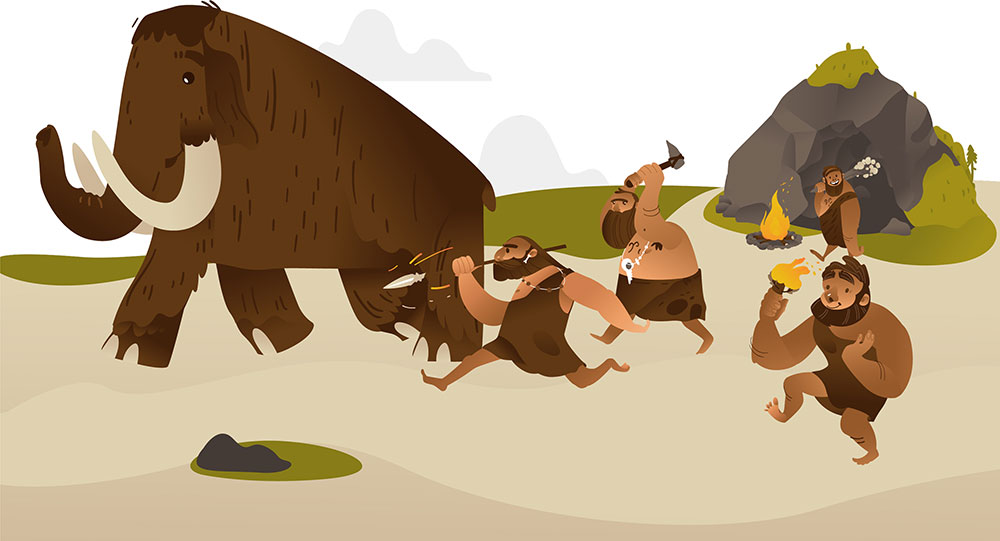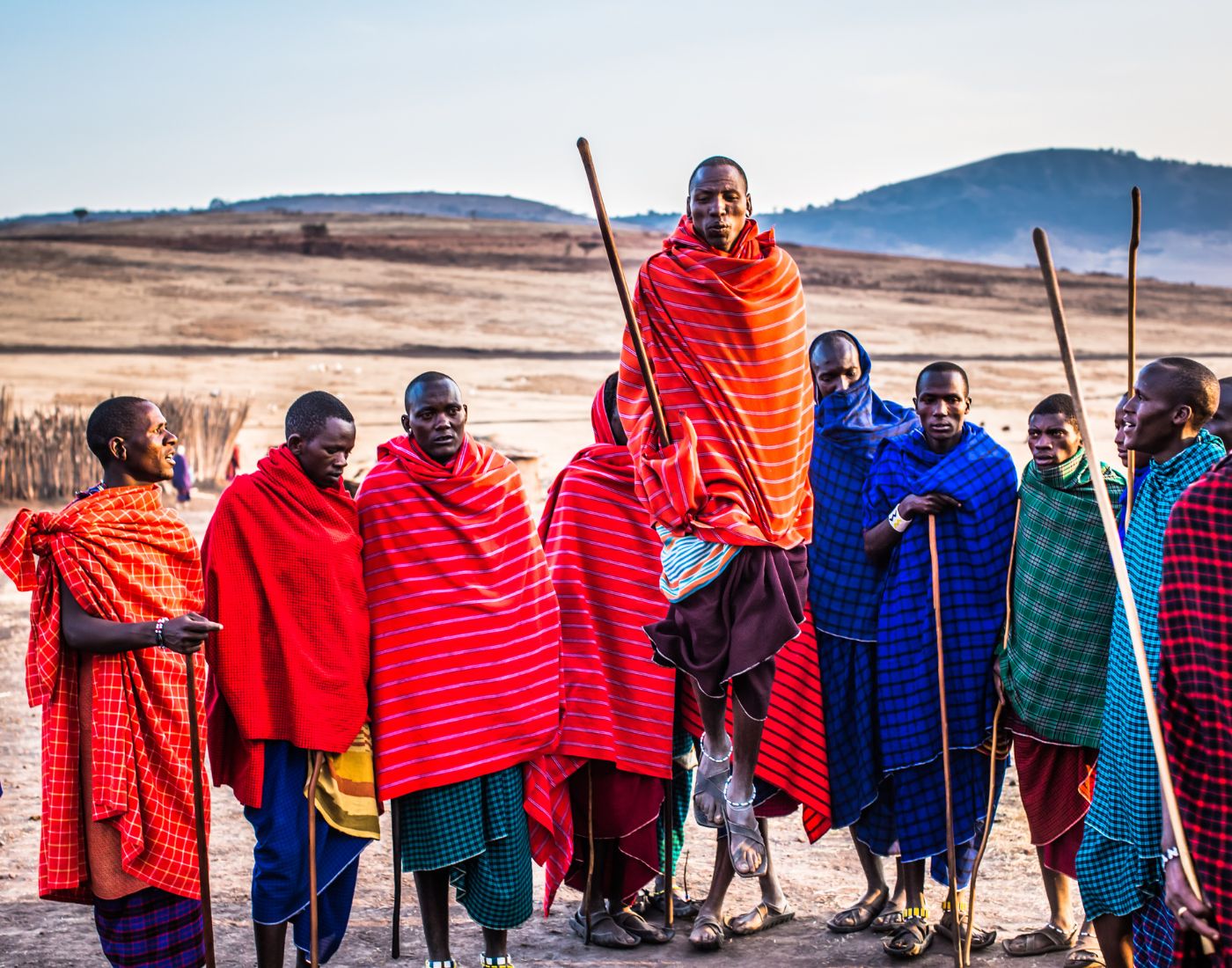What did our Ancestors eat?

Written by Dr Estrelita van Rensburg
Introduction
What did our ancestors eat? It is a very important question. Human evolution created us as the cleverest species on the planet. What our ancestors ate was the force that drove the human evolutionary process.
Nutritional science today is completely dominated by the financial interests of the powerful Big Food and Drink companies. Unsurprisingly, looking at the diet of our ancestors, things could not be more different from the food that modern day humans are eating!
Human evolution
Roughly seven to just over four million years ago, our hominin ancestors branched off from the chimpanzee ancestors. ‘Hominins’, is the term used to describe our human ancestors, which includes all our immediate ancestors and their close relatives.
The earliest archaeological evidence gathered on human evolution is based on fossil evidence. The oldest hominin fossils were found in Ethiopia - these hominins were small, chimpanzee size, but with smaller teeth and a skull that rested atop of a vertical spine. They were not yet walking on two legs, but able to maintain a more upright posture.
Between 4.2 million to 1.5 million years ago a range of hominin species known as Australopithecus or the ‘southern-ape’ existed. This species definitely walked upright, their bodies were small by comparison to ours and their brains about a third the size of ours. They lived across sub-Saharan Africa but, so far, no trace of them have been found on any other continent.
More recently, around 2.8 million years ago fossils classified as a homo were first found in Ethiopia - Homo erectus or ‘upright man’. Homo erectus was the first hominin to emerge from Africa and spread into other parts of the world (Europe, Asia including Indonesia).
Two other ‘archaic humans’ groups were found in Europe and Asia, Neanderthals and Denisovans, splitting from the human lineage over half a million years ago. These archaic forms of humans no longer exist.
Bigger brain, smaller gut
Humans developed a brain three times bigger than their chimpanzee ancestors. Chimps and gorillas are mainly plant-eaters (herbivores). They eat a low-quality diet consisting of fibrous plant matter.
The vast amounts of plant foods that they need to eat requires a large digestive system (gut). The digestion of the plant material takes place in their large intestine (colon) through a process called ‘fermentation’, which requires the presence of gut bacteria. Fermentation is not present in the human gut.
The expensive tissue hypothesis in human and primate evolution relates to brain size and gut size. It suggests that the size of these organs is linked - in order to develop a large brain which requires more energy to function, another organ had to decrease in size, requiring less energy. In human evolution this was achieved by evolving a smaller, less energy-intensive gut (see picture below).

This is typical of a carnivore gut, which is relatively small since it supports a better-quality diet which is nutrient rich. Another advantage of having a smaller gut is that it allows humans to walk upright, since we don't have a large colon (required for plant fermentation in gorillas and chimps).
Research shows our human ancestors experienced gradual but substantial changes in their dental and digestive systems as they adapted to a carnivore diet - eating meat and marrow instead of the low-quality plant diet of apes (chimps and gorillas).
Rich fossil collections of stone tools and animal carcasses have been found at archaeological sites. These show evidence of carnivore tooth marks and butchered bones with stone tool butchery marks. It confirms the hunter-gatherer activities of early humans. Earliest archaeological evidence shows stone tool crafting already around 2.6 million years ago.

Hominin evolutionary tree
What is a palaeolithic diet?
The palaeolithic diet (paleo) is sometime called the Stone Age diet. It is was the diet our earliest ancestors followed in the palaeolithic era (2.6 million years ago up to the agricultural revolution 10,000 to 15,000 years ago) when plant domestication started and crops were grown.
It was basically a carnivore diet, with some plants added seasonally, typically in late summer and fall when fruits were ripe and vegetation was plentiful.
If we compare the macronutrient dietary composition of (1) chimps, gorillas and the earliest hominins; (2) hunter-gatherers and (3) modern day humans, an interesting pattern emerges.
The hunter-gatherer diet is a carnivore diet. They obtained their food by hunting, fishing, scavenging, and gathering wild plants and other edibles. It contained a very high percentage of fat (including saturated fat), around twenty percent protein and very little carbohydrates.
The diet of modern humans is much closer to that of the plant eating apes - very high in carbohydrates and much lower in fat (usually unhealthy low-fat products). This is due to the amount of starchy foods found in all the processed foods we consume.

It is clear that humans evolved as meat eaters and fat-burners. In northern Europe, the hunter-gatherers lived on mammoths because their meat contained so much fat. Furthermore, these animals were hunted to extinction by humans.

Native Americans
Native Americans mainly survived by hunting buffalo. They were spectacularly healthy and lived to a ripe old age. In the US Census of 1900 the incidence of centenarians among them were 224/million men and 254/ million women. Surprisingly, it was only a paltry 3 – 6/million among men and women in the white population!

Inuit of the Arctic region
In the Arctic region, traditional Inuit populations lived almost exclusively on meat and fish, especially caribou and salmon. This was a diet rich in animal protein and fat. Vegetables as a source of food were favoured only in times of famine.
In the early 20th century the Arctic explorer, Vilhjalmur Stefansson, lived with the Inuit for extended periods. His impression was that they seemed to be the healthiest people he ever lived with! He witnessed neither obesity nor any disease in them.

The Maasai of Africa
In Africa, the Maasai tribe also feasts on a diet of animal fats and protein. The Maasai men eat nothing but meat, blood and milk (3-5 litres/day) and consider fruits and vegetables fit to be eaten only by cows!
In the 1960s a medical doctor from the Vanderbilt University (George V. Mann) studied the Maasai people in Kenya. He found that their blood pressure was significantly lower than that of Europeans (even in old age).
Futhermore, on ECG examination of hundreds of Maasai, he could not find any evidence of heart disease or heart attack. Moreover, neither did they suffer from other chronic diseases such as diabetes or cancer.

Historically human populations survived mainly on animal foods. Their diets were high in fat (60-80%), protein (20-35%) and low in carbohydrates (low-20%).
It is obvious that we should take note of these traditional ways of eating. It not only sustained a wide variety of populations in different parts of the world, they positively thrived and were exceptionally healthy by modern human standards.
Ideal human diet
In our modern-day society we have been told to eat a plant-based diet. For example, we have been told that eating red meat and fat is not advised - only lean meat should be on the menu (sparingly).
On what kind of evidence is this based, one wonders? We always assume our modern-day advanced knowledge is strictly based on science, or is it?
We cannot underestimate the impact of the food and drinks industry on advertising and the amount of processed foods consumed. The industry is protecting their own financial interests and not the accuracy of nutritional science. We explore this in more detail in our other blogs.
For more information and help on how to change your diet, with life changing results click on the link below.

